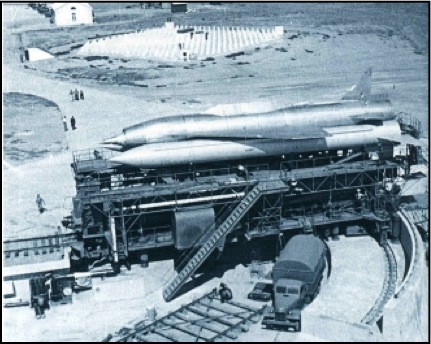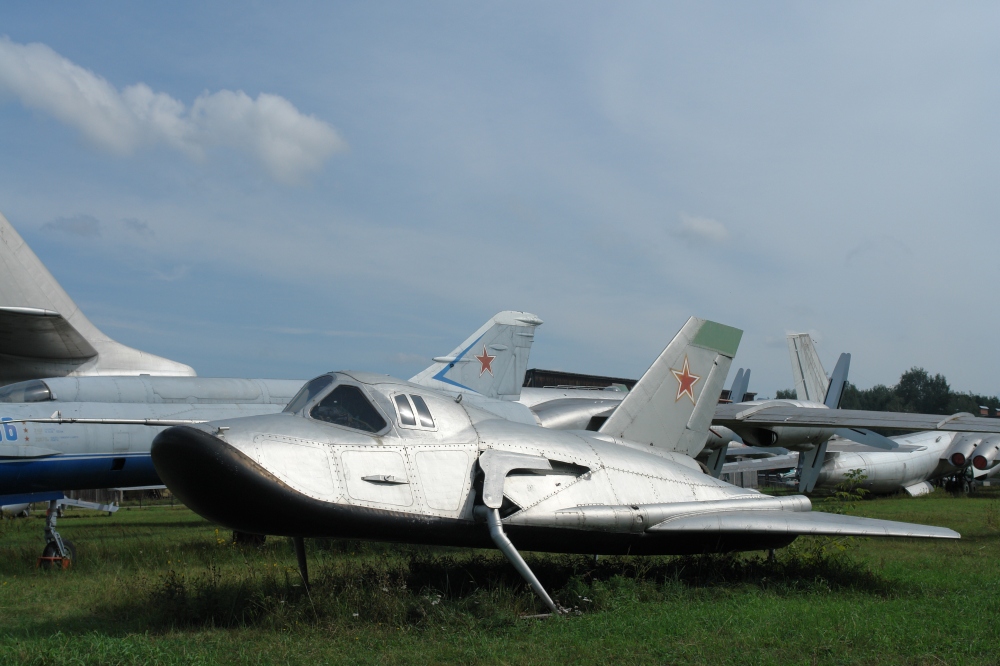On September 17th 1976 a competely new type of spacecraft first rolled out its hangar. The United States Spaceship Enterprise was the first reusable spacecraft in history and the next big thing after US won the race to the moon in 1969. The NASA believed from now on space travel would be a day to day operation, plannig 300+ operations a year. The rest is history. The five orbiters of the program logged 135 space flights between 1981 and 2011 (Do the math: no 300 missions a year), at no time has been more than one orbiter in service. 2 were lost killing 14. Overall the program still was a huge success. ISS, Hubble and many many satelites would not have been without it. Today the Orbiters Atlantis, Challenger, Columbia, Discovery and Endeavor are some of the best known flying machines in the world. Even after 30years Take Offs and Landings were broadcasted internationally. The STS Wellfare, Nasa arranged in Florida was attended by almost 1.000.000 people.
Not so well known and not even close to succesful was another reusable spacecraft project. The Buran – russian for Snowstorm.
In 1976, when the Enterprise was built it gained international attention. Even Russia paid close attention and immediatley understood the potential of a reusable spacecraft. It was clear very quickly that this could be the game changing thing that leads russia out of its space program stagnation after the lost moon race. This article will take a closer look on how the Buran was created and why it is not – as often believed – a copy of the US Space Shuttle.
To understand the Buran developmend we have to go back a couple of years first. In fact in Russia the idea of reusable space transportation systems was almost as old as the space program itself. But most of the ideas they came up with did not even make it to prototype status.
The first Idea that got a little more concrete was the Burya Cruise Missile. This thing was intended to transport nuclear warheads to continental US and travel back home to its base, all that happening in actual space. The development was started in 1956. Several prototypes werde designed and built but the project was scrapped in 1960 in favor of single use transcontinental cruise missiles… not to mention they have never been used in active service.

Closely after the Burya program was cancelled, the soviets started development on a testbed for future use reusable spacecraft: The Mikojan Gurewitsch MIG 105 “Spiral” system. Russia understood quite early that in favor of payloads it would be absolutely impossible to carry fuel and engines for a reusable spaceship in one body. So they came up with the Idea to use a supersonic transport plane and a liftingbody as actual spacecraft. This Idea was not only great, it also went quite far in development. The carrier plane has never been built, however the lifting body “OS” made several subsonic atmospherical flights. This thing may have made it into active service in a bigger variant one day, but then was scrapped in 1978 to pump more money into the Buran program.

Alongside the Spiral development some major changes were made in the Russian space program itself. Wassili Pawlowitsch Mischin, head of the constructors office “OKB-1” (one of russias most important space development centers was fired in 1974 as a result of the moon race loss to USA and the terrible record of the N-1 moon rocket. Also OKB-1 was merged with KB EnergoMash, another important design bureau forming the new NPO Energija under the lead of Walentin Petrowitsch Gluschko. The purpose of this department was to develop a predecessor for the N-1 and the strongest and most versatile rocket of all times (When Russia designed requirements they loved to go big) The project name was Energija. Interestingly Energija did have absolutely no purpose when its development began. Of course it would have been capable of transporting payloads to space, and maybe a top mounted spaceship would have been constructed some time, but when those guys started designing that monster, nobody knew what it was good for. seriously.
It is believed that at this time Russian authorities already have been well informed about the official start of the US STS program, which was in 1972, when NASA officially announced the rough outlines of the project consisting of an orbiter, two reusable boosters and a single use external tank. Many critics say that the transportation of a similar system was the sole reason for the Energija System. My personal opinion on this is that it just does not sum up. Energija was – from the very beginning – designed as a multi purpose rocket. The exterior of the main rocket could be fitted with either two or four boosters depending on the mission. Also Russia never really gave up the moon dream so in conclusion Energija was simply to good to be just a transporter even though it has never been assigned to a specific purpose as mentioned above.
In 1976 it was roughly clear what the American system was capable of. And it was just as clear in Russian common sense, that from now on Russia needed an own space truck. This is the only moment, the STS program was sort of copied. But I am not talking about the actual system, but about the purpose. America practically redefinded the size and weight of future payloads with the space shuttle. And if Russia wanted to be a player in this (seemed to be) highly lucrative business, they better have a solution capable of the same or more. In February 1976, 7 months before the Space Shuttle testbed Enterprise was presented to public, the Buran program was officially started. A program that soon turned out to become Russias most expensive space program of all times employing 30k people at some point. A program that could have brought back Russia in the space race, and a program that firstly sufferd under and then became a victim of a weird and ashaming political system that has no winners. And finaly a program whos aftermath is still alive today and made up one of the sadest aviation stories ever.
My next Buran article will feature the development of the orbiter and the integration of the Energija Rocket to the program so stay tuned.
Love the story would love to see more pictures of the buildings in which the rockets and space craft were built maybe possibly pictures of the inside of the machine. Thank you for writing these articles
LikeLike